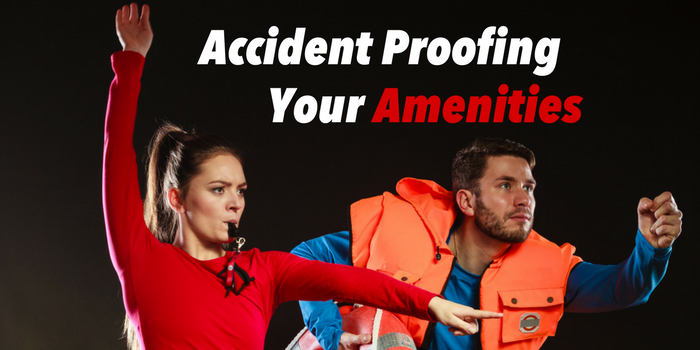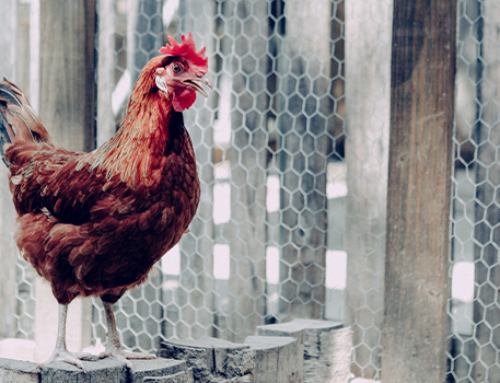Board members never set out to have an accident happen in their association. Nevertheless, accidents occasionally happen and claims are time-consuming and costly, even if they’re ultimately denied. To best protect your association, consider investing time upfront to keep HOA areas as safe as possible.
Below are safety concerns to look out for in an association’s common areas:
- Pool – Pools are, arguably, the most likely common area in which an accident will occur. The best way to prevent injuries in the pool itself is to both pay for lifeguards and post clear signage regarding pool rules. If a lifeguard is not financially feasible, there should be clear signage indicating the lack of professional assistance. Further, the verbiage should clearly announce that people’s personal safety while in the pool is 100% their responsibility. To reduce the risk of a fall within the pool area, consider signage that encourages caution around wet surfaces. Additionally, consider contacting your insurance company to conduct regular inspections to assess high-risk areas. Areas to be especially mindful of are areas with cracked cement and any area with stairs or steps. While nothing can make the pool completely accident-proof, following these steps can go a long way in protecting the members of your association from physical injury.
- Gates – Like the pool area, accident-proofing your association’s gates is a two-fold task. First, you must protect your association from outside influences that may wish to harm your members. Secondly, you want to protect the members of the association from any unfortunate incidents where a person’s physical well-being is harmed when they interact with the gate. To protect homeowners from something like theft, consider installing a camera that takes a picture every second and is stored for at least 30 days on a separate PC. This will help on two fronts – it will help the police catch anyone who goes into the community with ill intentions, and if anyone files a claim for a gate-related injury, there will be a record detailing what actually happened. Other precautions for preventing injuries is to regularly inspect gate equipment to confirm it is operating optimally, and ensure that surrounding walkways are free of debris and are in good repair.
- Playground – Conduct regular inspections to make sure all playground equipment is operating as it should. Be mindful of any cracked or otherwise dilapidated cement in the area, especially on common walkways. Also, look for potential hazards in the grassy areas of the playground; any major drop-offs can pose serious risk. Make sure playground rules are up-to-date and that children are following them. For example, prohibit children from playing without adult supervision, and rules should clearly discourage rough play. While it’s not necessary to have 24/7 supervision of the playground area, a site manager could stop by occasionally during peak hours to ensure children are following the rules.
- Clubhouse – Accident-proofing your clubhouse means assessing risks both inside and outside of the facility. First, consider the legal implications of the events and the people hosting them. For example, you’ll want to make sure your clubhouse is for members only, because if it’s opened for commercial use, the onus of financial responsibility is greater for the association. Carefully consider what types of activities can take place there and discourage commercial use (such as Tupperware parties and the like). Like with pools, consider contracts that clearly put the responsibility of personal safety on the members using it, especially if the pool and clubhouse are physically connected to each other. Expecting members to put down a deposit protects the association from any damages. To protect homeowner safety, consider the aforementioned guidelines for outdoor safety. Indoor safety concerns, like with the outside, focus on fall prevention. Make sure your tile, carpet, laminate, or wood is in good condition and no uneven surfaces exist. Stairs or steps should be well-maintained. Keep walkways clear of foreign objects, such as low-lying furniture or unsecured cords.
When it comes to accident-proofing your amenities, an ounce of prevention is worth a pound of cure. No matter how vigilant a board is, accidents will occasionally happen. However, physical injuries can be devastating physically, financially, and emotionally to the individual who experiences it. Therefore, boards should do everything in their power to make sure the association’s amenities are as safe as they reasonably can be.
If you are a board member of an HOA community in San Antonio or surrounding areas, and are looking for additional assistance accident proofing your neighborhood, contact Spectrum Association Management today. Our experienced association managers provide refreshingly different services to help you with the day-to-day responsibilities of your community.







